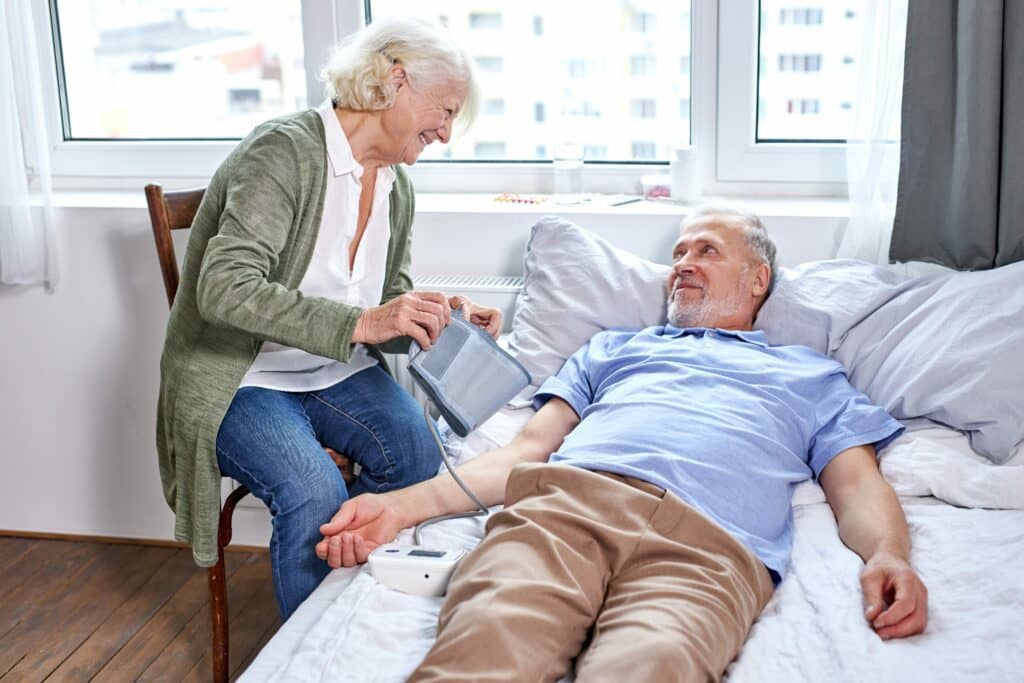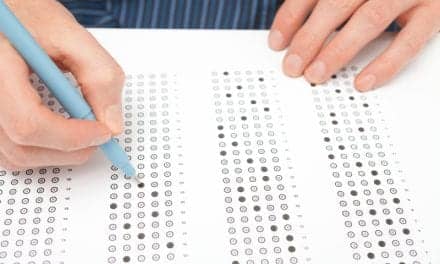To better promote healing, hospitals are starting to take steps to encourage inpatients to get enough slumber during their stays.
By Lisa Rapaport
Ask just about anyone to describe their experience sleeping in a hospital and they’ll invariably complain that bright lights, incessant beeping from bedside monitors, visits from nurses in the middle of the night, and morning rounds before dawn left them exhausted and unable to get any rest. But things are starting to change as clinicians, researchers, and hospital administrators increasingly recognize that poor sleep is tied to worse patient outcomes.
“Generally, there has been a very welcome trend towards acknowledging the importance of sleep for overall physical and mental health and wellness,” says Ari Shechter, PhD, a sleep researcher and assistant professor at Columbia University Irving Medical Center in New York City. “Sleep is the best medicine, and more people are realizing this. Hospitalized patients who are recovering from illnesses are among the most physically vulnerable people, so it really makes sense to try and protect their sleep to help promote their optimal recovery.”
What Keeps Inpatients Up at Night
From the patients’ perspective, some of the factors deemed to be most disruptive to sleep are noise from other patients, noise from hospital equipment, and awakenings by hospital staff for various patient care activities, Shechter says. “These can make it difficult to fall asleep and stay asleep,” he says.
Too much light at night and too little exposure to daylight during waking hours can both disrupt circadian rhythms and contribute to sleep disturbances, Shechter adds. Even when hospitals dim the lights at bedtime, it’s still too bright to avoid negatively impacting circadian rhythms, which can disrupt sleep as well as physiologic processes involved in healing and recovery.
On top of this, patients are often awakened to check vital signs or administer medications. And many of the medications commonly administered to inpatients, like opioids, sedatives, and corticosteroids, can disturb sleep, Shechter says.
These ideas aren’t just anecdotal. One study of general internal medicine patients published in PLoS One found they got an average of 5.5 hours of sleep a night in the hospital, compared with 7.0 hours on average at home. Sleep quality was also poor, the study found. Multi-patient occupancy rooms and prior sleep disorder diagnoses were both independently associated with shorter sleep duration.1
When patients in the study were asked to identify what contributed to poor sleep during their hospital stays, the most common culprit was noise, reported by 59% of respondents. Other causes were nursing interruptions (30%), uncomfortable beds (18%), bright lights (16%), unfamiliar surroundings (14%), and pain (9%).1
Another study published in Applied Nursing Research surveyed inpatients about sleep disturbances and found 56% of the variance in sleep disruption could be explained by three factors: physical or emotional impairment due to illness or hospitalization; discomfort; or interruptions due to the hospital environment or medical care.2
“For those who are acutely ill and whose disease process requires it, care throughout the night is necessary,” says Nicola Orlov, MD, MPH, a sleep researcher and assistant professor of pediatrics at the University of Chicago. “However, our hospital has focused on decreasing unnecessary overnight disruptions for low acuity patients whose care does not necessitate disruptions during sleeping hours.”
Hospital Lighting Fixes

Some of what keeps hospital patients up at night can be fixed with new technology and equipment, but major change can only come if people working in hospitals are willing to radically shift the way they do things to put prioritizing patient sleep at the heart of daily routines.
Smart lighting, for example, can be used to achieve illumination patterns over a 24-hour period that help avoid disruption to the circadian rhythm, Shechter says. These approaches aim to achieve a more natural light environment, and consider the amounts and types of light patients are exposed to as well as the timing of light exposure, he says.
In a clinical trial published in the Journal of Sleep Research, for example, cardiology inpatients were randomized to rooms with traditional lighting or an interventional lighting system with more darkness at night and brighter illumination during the day. After five days in the hospital, sleep duration increased by 29 minutes, or about 7%, for patients in the intervention rooms.3
Another experiment published in Sleep tested the effects of reducing blue light—the short wavelength light that is thought to play an outsize role in circadian rhythm disruption—in the evening and overnight. Compared with patients randomized to traditional lighting, patients randomized to the blue light reduction arm had less suppression of melatonin levels, longer total sleep time, and a longer period of rapid eye movement sleep.4
Changing Hospital Routines
At the University of Chicago, a serious overhaul of hospital routines has gone a long way towards improving patient sleep, Orlov says.
For adult patients, the hospital focused on rescheduling early morning labs, eliminating unnecessary vital sign checks throughout the night, and rescheduling medications that defaulted to schedules throughout the night. Adult patients are also encouraged to specifically request batching of care overnight to minimize the need for sleep disruptions.
For pediatric patients, the hospital eliminated blood pressure checks for low risk patients and also rescheduled oral medications to be administered only during waking hours, Orlov says.
More importantly, however, the hospital instituted clinical deterioration screening tools for adult and pediatric patients that enable clinicians to identify the low risk cohort of patients who can have unnecessary disruptions eliminated or batched throughout the night, Orlov says. These tools, eCART for adults and pCART for children, are algorithms developed by physicians at the University of Chicago that use vital signs, lab results, and demographic data to calculate a real-time risk score for patients.
“Our team has found this to be critical in supporting sleep because it allows us to objectively identify those who can forgo care throughout the night,” Orlov says.
A study published in Pediatrics found that after the hospital updated electronic health records to enable the elimination of orders for overnight blood pressure checks for pediatric patients, the proportion of children able to avoid this sleep disruption increased by 51% and nighttime disruptions decreased by 19%. Children got more sleep as a result, and the study found no adverse events associated with forgoing overnight blood pressure checks.5
Nonpharmacologic Sleep Aids
Even though shifts in hospital routines designed to improve patient sleep have been slow to take hold everywhere, the idea has been around for decades. Sharon Inouye, MD, MPH, director of the Aging Brain Center and a professor of medicine at Harvard Medical School and Beth Israel Deaconess Medical Center, developed a sleep-improvement protocol decades ago that’s still in use today.
One goal of the multicomponent Hospital Elder Life Program (HELP) was to improve sleep while also reducing the need for sedative-hypnotic drugs among hospitalized older adults.
“The HELP program is wonderful for improving sleep without medications through nonpharmacologic approaches using music, relaxation sounds and exercises, massage, and warm drinks such as milk or herbal tea,” Inouye says.
Study results from early tests of the HELP program published in the Journal of the American Geriatrics Society found the majority of patients offered these types of supports for better sleep tried at least some of them. Sleep quality improved more for patients who tried multiple components of the program instead of just one, with the strongest effect for people who tried two or three approaches at once.6
A systematic review and meta-analysis published in JAMA Internal Medicine found that nonpharmacologic interventions like the HELP program reduced delirium, falls, and length of stay. These interventions, which include sleep improvement components, also increased the likelihood of a discharge to home instead of an institutional setting and reduced the chance of readmissions.7
Some efficacious sleep aids are decidedly low tech. A randomized trial published in the British Journal of Anesthesia tested the impact of eye masks and ear plugs for patients recovering from surgery on post-anesthesia care units. Compared to the group that went without these interventions, the group that received these items on their first night after surgery had better sleep quality at night, less need for daytime naps, and reduced consumption of morphine for pain management.8
Similarly, a systematic review and meta-analysis examining the effect of ear plugs and eye masks for intensive care unit patients found this approach improved sleep quality. This study, published in the Journal of Sleep Research, also found that these items helped reduce delirium, which can cause major complications and lead to longer hospital stays and worse outcomes for patients.9
Hospital Culture Changes
Lyn Weinberg, MD, is director of geriatrics and medical director of the HELP program for the Allegheny Health Network in Pittsburgh, Pa. From her perspective, implementing protocols to improve sleep isn’t the hard part, it’s getting clinicians on board with a new way of doing things.
“One thing our hospitals have done is implement a standardized protocol that promotes uninterrupted sleep via a set of physician orders, which explicitly direct nursing staff to limit nighttime interruptions, including an order for no vital signs and phlebotomy between 10 pm and 6 am, unless the patient has a change in condition,” Weinberg says. “Unfortunately, we still have significant challenges in our hospitals around the culture of prioritizing healthy sleep, as evidenced in part by lack of widespread use of this order set.”
Little things can make a big difference, however. Weinberg recalls rounding with one of her mentors during training and observing him take the time to open window blinds in patient rooms during the day. Bringing natural daylight into the room is one of many simple, cost-free interventions that can support better sleep and better outcomes—and making this happen requires training staff to do these things as a part of their daily routines.
A key component of the HELP program at Allegheny hospitals is having staff and volunteers talk to patients about what helps them sleep at home so that elements of these routines may be carried over to their hospital stays, Weinberg says. This information gets relayed to physicians along with prompts to discourage daytime naps, ensure rooms are well lit during the day, and provide patients with eye masks at night.
Even though measures like this have a proven track record, adoption is far from universal. “Right now, most of the way hospital care is delivered is with the goal of promoting shorter hospital lengths of stay, thereby pushing for testing and interventions to occur 24/7, including overnight,” Weinberg says.
More research may still be needed to encourage more widespread adoption of sleep-promotion protocols inside hospitals, particularly around longer-term health outcomes and factors that can impact hospitals’ bottom lines like readmission rates, healthcare costs and utilization, and recurrent events, Shechter says.
“The scientific community can continue to work to create a compelling evidence base and develop novel solutions to optimize sleep for inpatient settings and needs to work together with hospital systems to translate these findings into practice,” Shechter says.
Lisa Rapaport is a freelance journalist with experience writing and editing news about health, medicine, wellness, and science.
References
1. Dobing D, Frolova N, McAlister F, Ringrose J. Sleep quality and factors influencing self-reported sleep duration and quality in the general internal medicine inpatient population. PLoS One. 2016;11(6):e0156735.
2. Ye L, Owens RL, Dykes P. Individualized sleep promotion in acute care hospitals: Identifying factors that affect patient sleep. Appl Nurs Res. 2019 Aug;48:63-7.
3. Giménez MC, Geerdinck LM, Versteylen M, et al. Patient room lighting influences on sleep, appraisal and mood in hospitalized people. J Sleep Res. 2017 Apr;26(2):236-46.
4. Vethe D, Scott J, Engstrøm M, et al. The evening light environment in hospitals can be designed to produce less disruptive effects on the circadian system and improve sleep. Sleep. 2021 Mar 12;44(3):zsaa194.
5. Cook DJ, Arora VM, Chamberlain M, et al. Improving Hospitalized Children’s Sleep by Reducing Excessive Overnight Blood Pressure Monitoring. Pediatrics. 2020 Sep;146(3):e20192217.
6. McDowell JA, Mion LC, Lydon TJ, Inouye SK. A nonpharmacologic sleep protocol for hospitalized older patients. J Am Geriatr Soc. 1998 Jun;46(6):700-5.
7. Hshieh TT, Yue J, Oh E, et al. Effectiveness of multicomponent nonpharmacological delirium interventions. JAMA Intern Med. 2015 Apr;175(4):512-20.
8. Guen ML, Nicolas-Robin A, Lebard C, et al. Earplugs and eye masks vs routine care prevent sleep impairment in post-anaesthesia care unit: a randomized study. Br J Anaesth. 2014 Jan;112(1):89-95.
9. Locihová H, Axmann K, Padyšáková H, Fejfar J. Effect of the use of earplugs and eye mask on the quality of sleep in intensive care patients: a systematic review. J Sleep Res. 2018 Jun;27(3):e12607.
Top Photo 239509597 © Albertshakirov | Dreamstime.com: Middle-of-the-night vital sign checks prevent patients from getting enough sleep while in the hospital—and data shows they may be safely eliminated for some patients.





